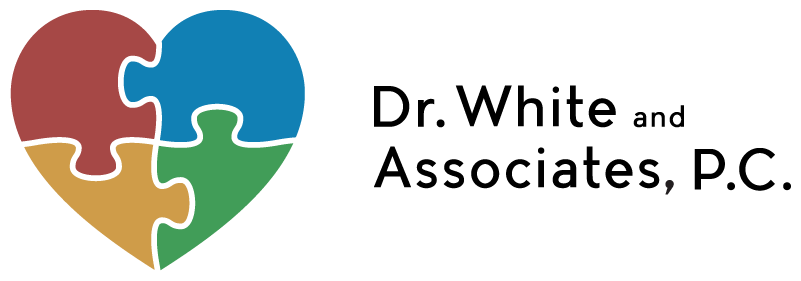By: Kayli Beaty, LMFT-Associate Supervised by Dr. Mark White
What is the first trick tech experts ask you when you bring in a phone or laptop that is slow or glitching?
“Have you updated and reset the software?”
Our nervous systems often require a hard reset, or an update to adapt to current circumstances more efficiently. The God-given reset button to our nervous system is through breath. While not every breathing technique fits every kiddo, here are ten options to try as you aid your child in navigating life’s difficulties. A child’s difficult behaviors, when met with a connected adult “become fewer and less intense” (LaPointe, 2016, p. 44). Encourage a secure connection between yourself and your child by completing these activities together.
Hulk Hands
Hulk hands is a breathing exercise that can be great when anger appears all-consuming for a young child. To complete the exercise, raise both hands above your head before dropping them down to your side and flexing them in a fist. Breathe in while your hands go up, and out as your hands go down (Conscious discipline, 2024).
Box Breathing
Box breathing is an exercise where an individual imagines drawing a box in the air with their pointer finger, breathing in for four seconds while tracing one side of the box, then breathing out for four seconds while tracing the next side. Go over the box three to five times.
Dragon Breathing
Encourage your child to take a big deep breath in while clasping their hands around their mouth, then slowly breathing out in their cupped hands. Their warm breath mimics a fire-breathing dragon!
Butterfly Taps
Cross your arms where the opposite hand is resting on the opposite shoulder. While slowly breathing in and out, alternate hands tapping back and forth. Similar to walking, butterfly taps involve bilateral stimulation which stimulates certain “networks in the brain related to stress and anxiety” (Serin et al., 2018, p.43). Essentially whatever is happening to one side of the body is happening to the other.
4-7-8
Breathe in for four seconds, hold your breath for seven seconds, and breathe out for eight seconds. This exercise can be particularly helpful when paired with tensed muscles while inhaling, and relaxing muscles while exhaling.
5-4-3-2-1
Engage all five senses with the 5-4-3-2-1 exercise. Identify five things your kiddo might be able to see, four things they can touch, three things they can hear, two things they can smell, and one item they can taste.
Lemon Squeezes
Hold your hands straight out in front of you and act as if you are holding a large lemon in each hand. Then, squeeze the “lemons” as hard as you can to imagine juice dripping from them. Breathe in as you hold the lemons, and breathe out as you squeeze them (Koeppen, 1974).
Pretzel Breathing
Another nod to bilateral stimulation, pretzel breathing involves the child to begin with arms straight out and thumbs facing down. Cross hands and interlock fingers before pulling them toward your chest and rotating hands upward. Breathe in as you twist your hands in and breathe out as you pull them back through to their original starting position (Conscious discipline, 2024).
Body Inventory
While the previously listed breathing exercises are relatively short, body inventory will likely take anywhere from five to ten minutes. Begin at your toes and notice the sensation you feel as you wiggle them, then move to your ankles, calves, quads, glutes, and every muscle up to your ears and facial muscles. This exercise can be particularly helpful before bedtime (Johles et al., 2023).
Roller Coaster Breathing
Hold one hand out with fingers spread wide. With the opposite pointer finger, trace fingers from the base of your thumb through each finger. Breathe in as you go up, and out as you go down. Repeat 3-5 times or until your heart rate slows.
Breathing techniques are a great way to help regulate your child’s nervous system and allow their heads and hearts to access a healthier degree of cognitive thinking. However, the work does not stop at merely taking deep breaths. Pulling undesirable symptoms from the root can effectively begin once one is within a reasonable balance of cognitive ability and emotional accessibility. If you have a kiddo or adolescent who is experiencing difficulties with life changes, anxiety, or depression, schedule a session with me, Kayli Beaty.
Be blessed and be a blessing,
Kayli
References
Conscious discipline. (2024). Hulk Breath. YouTube. Retrieved from https://www.youtube.com/watch?v=uBQCLXddFrY.
Johles, L., Norell, A., Lundqvist, C., Jansson-Fröjmark, M., & Mehlig, K. (2023). Is a brief body scan helpful for adolescent athletes’ sleep problems and anxiety symptoms? Mindfulness, 14(6), 1522–1530. https://doi.org/10.1007/s12671-023-02149-w
Koeppen, A. S. (1974). Relaxation training for children. Elementary School Guidance & Counseling, 9(1), 14-21.
LaPointe, V. (2016). Chapter 3: Inside the discipline vortex. In Discipline without damage: How to get your kids to behave without messing them up (pp. 44). , Life Tree Media.
Serin, A., Hageman, N. S., and Kade, E. (2018). The therapeutic effect of bilateral alternating stimulation tactile form technology on the stress response. Journal of Biotechnology and Biomedical Science – 1(2):42-47. https://doi.org/10.14302/issn.2576-6694.jbbs-18-1887

